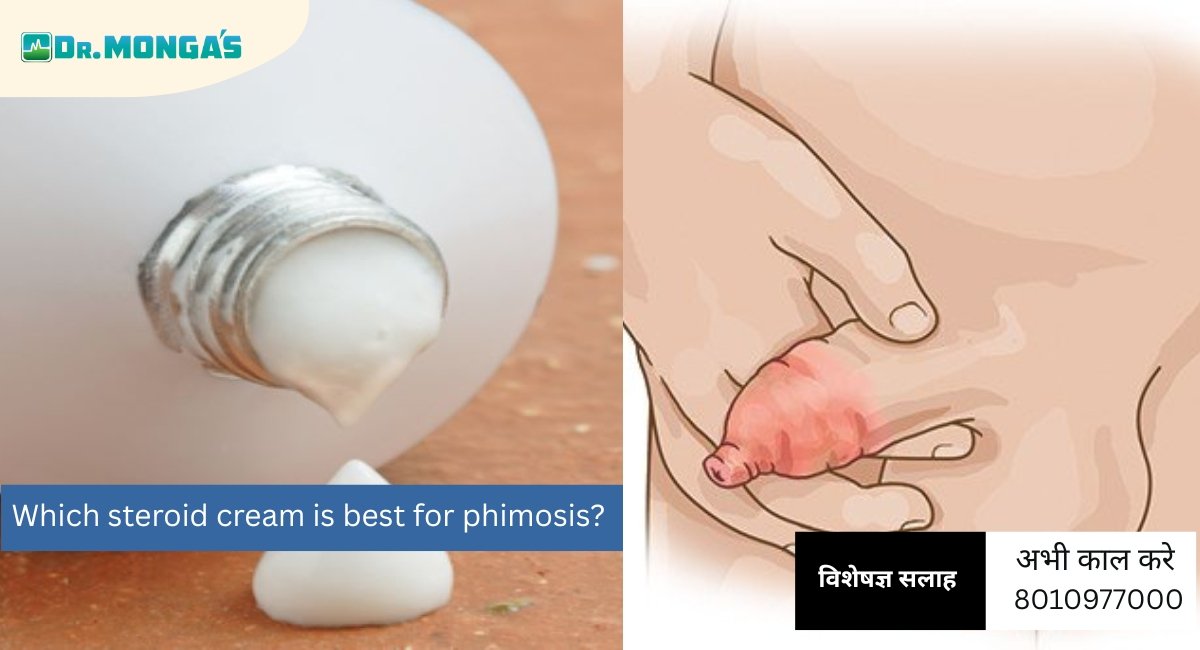Today, we will talk about a very common but often ignored condition that affects many men—something so personal that most hesitate to talk about it, even with their family. However, ignoring this issue can lead to serious consequences. Many men experience pain during sex, and in some cases, even bleeding from the penis. What’s even more alarming is that this condition, if left untreated for years, may increase the risk of penile cancer.
This condition is called phimosis.
It is more commonly seen in men who have not undergone circumcision. So, what exactly is phimosis? Why does it occur? And how can it be treated?
To answer all of this, let’s see what Dr. Yuvraj Monga, MBBS, MD, sexologist, says.
“In males, the skin covering the tip of the penis is called the foreskin. In phimosis, this skin becomes tight and cannot be pulled back (retracted). In severe cases, it can even block the flow of urine. This condition is called phimosis.
There are several causes behind it. One major reason is repeated infections or poor hygiene. These infections can cause scarring, which makes the foreskin less flexible.
Another common cause of paraphimosis is injury to the foreskin, which can also lead to tightening. When the foreskin becomes too tight, it is difficult to clean the area underneath the foreskin. This leads to the accumulation of urine particles, smegma, and oil secretions, which further cause infection and inflammation of the foreskin.
This problem becomes worse during summer, as excessive sweating and heat can lead to more bacterial growth and foul odor in the private area, increasing the risk of infections.
One of the most common signs of phimosis is that the foreskin cannot be retracted. Over time, small tears (called vertical splits) may develop. This can cause a burning sensation while urinating.
If the person is sexually active, then during an erection, the tight foreskin can cause severe pain, which may interfere with erection or sexual activity. If phimosis is left untreated for years, in some rare cases, it can even lead to penile cancer. Get expert, non-surgical treatment for phimosis today at Dr. Monga Clinic.
In India, this is a very common issue, especially among young men. Due to a lack of awareness about male hygiene and sexual health, many people never attempt to retract the foreskin or clean it properly, leading to phimosis.
Symptoms of Phimosis
In cases of phimosis, the most commonly observed symptom in males is the inability to retract the foreskin over the head (glans) of the penis. Apart from this, many men experience a burning sensation or pain while urinating. In some cases, the foreskin balloons during urination due to trapped urine underneath. During an erection or sexual activity, the tight foreskin may cause severe pain or a pulling sensation. Repeated infections, especially balanitis (inflammation of the glans and foreskin), are also common, leading to redness, swelling, and foul-smelling discharge. Small tears or vertical splits may develop on the foreskin, especially during forceful retraction or intercourse, causing further pain. Due to the tight foreskin, maintaining proper hygiene becomes difficult, which increases the risk of infections even more. Learn more about phimosis symptoms and non-surgical treatment options.
Grades of Phimosis
There are different grades of phimosis—mild, moderate, and severe.
In mild phimosis, steroid-based creams and foreskin stretching exercises may help. In moderate phimosis, medications and exercises can offer relief, but if not, then minor surgical procedure required.
Diagnosis and evaluation
Both a urine test and a physical examination can help diagnose issues with the foreskin. A urine test can detect signs and sof urinary tract infections, which can be associated with foreskin problems. Physical examination allows a doctor to assess the ability to retract the foreskin and look for signs of inflammation, infection, or scarring.
Phimosis in Children vs. Adults:
- Children: Phimosis is a normal condition that often rights itself and usually does not need treatment.
- Adult: Phimosis is not a serious problem unless it interferes with sex, causes pain, or makes it difficult to clean.
Is phimosis permanent/cancerous?
Phimosis is NOT always cancerous, but severe cases with poor hygiene may slightly increase infection risks. Many kids outgrow it, and adults can treat it with stretching or creams. If you feel pain or bleeding pain, do not force it—consult a doctor.
Does phimosis affect fertility or sex life?
No, phimosis does not cause infertility. Phimosis is a condition that affects only the foreskin of the penis. It does not have any effect on the quality and quantity of the sperm as well as sperm cramps. But yes, it affects the sex life; a man can feel pain during intercourse or be unable to penetrate.
Conclusion
The condition does not affect fertility but can significantly impact sexual health and quality of life due to pain or difficulty during intercourse. The good news is that phimosis is treatable—whether through hygiene improvements, topical medications, stretching techniques, or minimally invasive surgery. Early diagnosis and professional guidance can help you treat it early.
Dr. Yuvraj Monga is one of the best sexologist doctors in Delhi NCR, especially in areas like Lajpat Nagar, Dwarka, and Gurgaon. You should consider consulting Dr. Yuvraj at Dr. Monga Medi Clinic. With a reputation for excellence and a patient-first approach, he is a trusted name in phimosis and sexual health treatment.










Leave a Reply